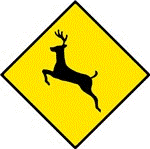United States Department of Agriculture, National Wildlife Research Center: Symposia

Human Conflicts with Wildlife: 2002 Symposium
Date of this Version
8-1-2000
Abstract
The negative impacts of wildlife on forest resources can be extensive. This paper provides some insight into the economic and environmental consequences of wildlife damage to forest resources and a brief overview of the damage inflicted by select wildlife species. Probably the most thorough measure of wildlife damage to forests in the Pacific Northwest was initiated in 1963 and 1964 by the Committee on Animal Damage Survey of the Western Forestry and Conservation Association. This study estimated that 30% of the tree seedlings planted would be damaged if no preventive practices were implemented; stocking rates on unprotected sites were 75% of those on protected sites; and trees protected from animal damage were 33% taller than unprotected trees after 5 years. Updating the economic numbers to reflect present day values, this damage results in an annual financial loss in Oregon of US$ 333 million. The total predicted reduction in value of the forest asset in Oregon, if no animal damage management was practiced, was estimated to be US$ 8.3 billion. Results from a recent survey conducted by the Oregon Forest Industry Council also provides insight into economic losses due to damage by select species: mountain beaver (US$6.8 million) and bear (US$ 11.5 million).

